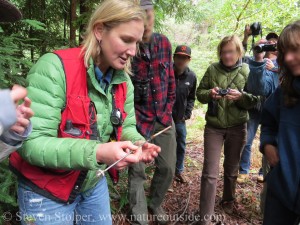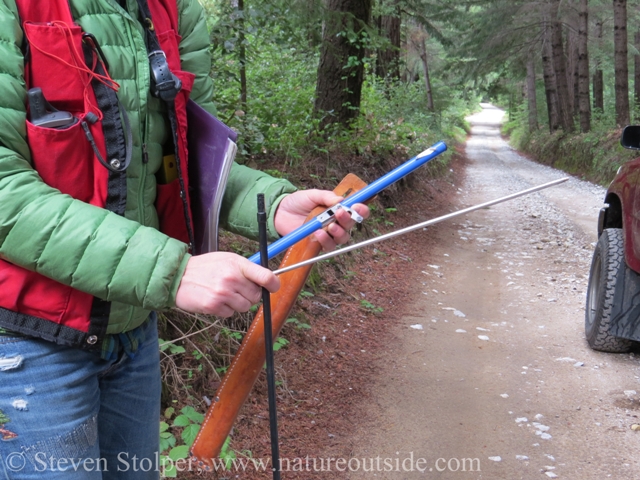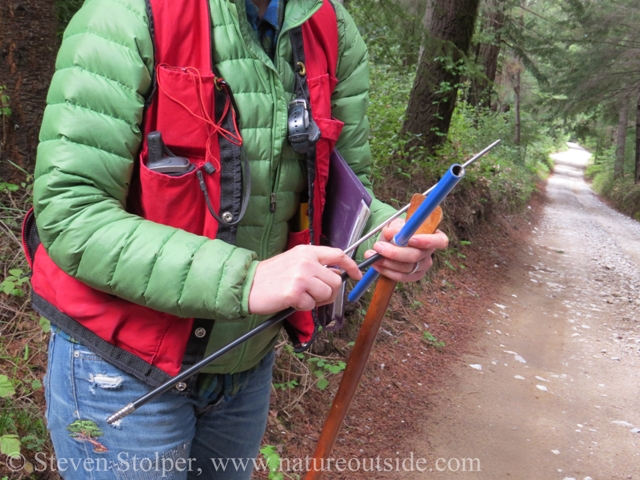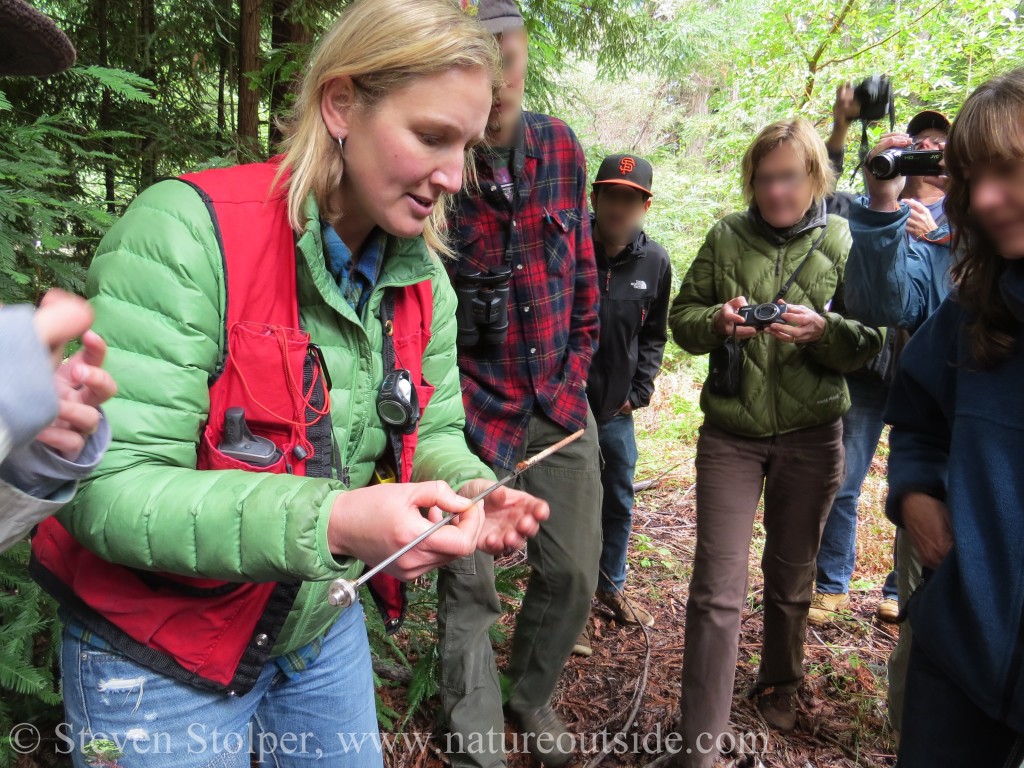
Learning a new skill
The amazing thing about bushcraft is that you can be a student all your life. There is no graduation! A new skill, a different technique, or some new insight into our natural world constantly delights and surprises us – if we keep an open mind. But once in a while we get really lucky. Bushcraft leads us into entirely new fields.
Seeing the Forest for the Trees
I am taking a course at the University of Santa Cruz that I will discuss in depth in a future post. One section of the course educates us about forestry. This is a field I never thought I would learn anything about! But just as the trail can take an unexpected twist, I found myself eager to learn about managed forests.
The class headed into the western Santa Cruz Mountains to learn about forest stewardship. We spent the day exploring an 8,000+ acre mixed redwood forest managed for lumber using sustainable practices. These included selective harvesting, riparian setbacks to protect watercourses, and various measures for erosion control. What is amazing is that this forest is jointly owned by five environmental preservation nonprofits! One third of the property produces lumber. The remaining two thirds are set aside as nature preserve. Revenue from timber harvests goes right back into conserving the land. This is so unorthodox my mind gets dizzy just thinking about it!
Getting to the Core of the Matter
Our guide was Nadia Hamey, a Registered Professional Forester and principal of Hamey Consulting. She answered a question that had been on my mind for a while: How do foresters/researchers learn the age of a tree without cutting it down? In times past, the age of a tree was established by felling it and counting its growth rings. I was aware that a procedure called “coring” allowed people to measure the age of a tree nondestructively. But I had no idea how it was done. Nadia demonstrated the technique for the class.
Coring Equipment
The equipment we used is called an increment borer. I believe the one we used was manufactured by a Swedish company, Haglof. It consists of three pieces that Nadia carries in a leather sheath: The handle, the auger, and the extractor. The auger is essentially a drill bit circumscribed around a hollow tube. It locks into the handle. The extractor is a long semi-circular metal rod that fits inside the hollow tube.

Increment Borer: handle (blue), auger (black), extractor (silver), leather sheath

Locking auger into handle. Extractor is not inserted into auger.
Coring the Tree
The auger is placed against the side of the tree and the handles rotated clockwise. As the bit digs into the tree, it creates a cylinder of wood within the hollow tube.

Starting. Checking scene for safety.

Tree coring – rotating clockwise

As friction increases, a stick can be used for mechanical advantage
At one point, the friction of the auger against the wood generated a hideous screech. Some of the students asked what caused the unnerving noise. Nadia deadpanned, “It is the tree screaming in agony.” It took a second for the startled students to realize Nadia was joking. 🙂
Once the auger reaches the center of the tree, Nadia inserted the extractor into the tube and worked it down its length. Shaking the extractor separated the wood cylinder from the tree. We could then rotate the auger counter-clockwise to remove it from the tree. When we slid out the extractor, it had a wonderful core for us to examine.
Examining the Core
Normally, the core is polished/sanded to make the growth rings easier to count. But that didn’t stop us from counting the rings.

Examining the core

Counting growth rings using a redwood twig as pointer

A close up of the fresh core
I should point out that trees cored in this manner live long and healthy lives. Sap generated by the tree flushes and seals the small hole we created.
Further Reading
If you enjoyed this post, I have another about measuring the height of a redwood tree that may interest you.

Learn fun facts and useful tips by subscribing to the free Bushcraft Newsletter.



Leave a Comment